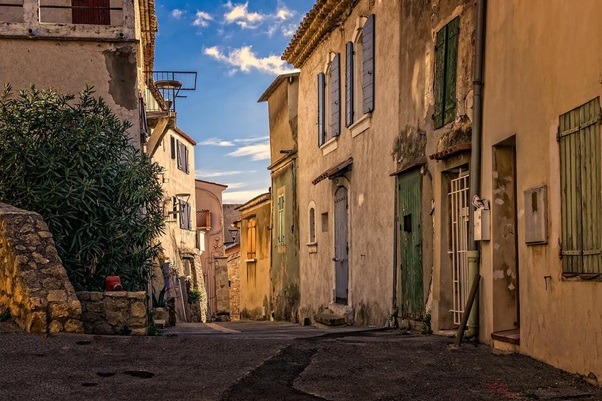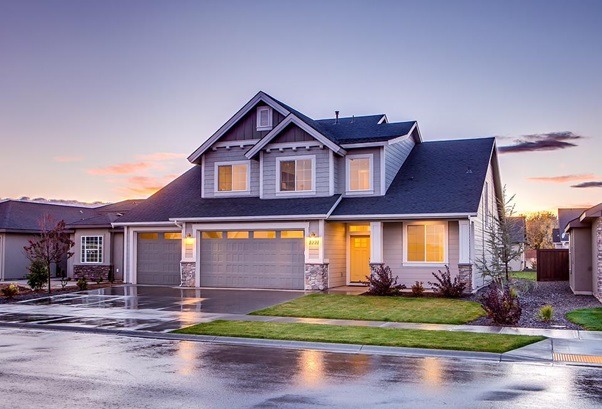You may not think of your home’s exterior as something that needs protection, but it does. Your home’s exterior is the first thing people see, and it can make a big impression. Here are eight ways to protect your home’s exterior and keep it looking good.
1. Paint or stain your home’s exterior regularly
If you want to protect your home’s exterior, you should consider painting it regularly. Painting your home’s exterior can protect it from the elements and keep it looking good for years. Choose a paint or stain that is weather-resistant and will hold up against wind, rain, and sun.
For example, latex paint is a good option for painting your home’s exterior. It is durable and can withstand the elements. On the other hand, oil-based paint is not as durable and can fade in the sun.
Additionally, you should consider the color of your paint or stain. A light color will reflect heat better than a dark color. This can help keep your home cooler in the summer.
2. Clean your home’s exterior regularly
In addition to painting, you should also clean your home’s exterior on a regular basis. This will remove dirt, dust, and debris that can damage your home’s exterior. Use a pressure washer to clean your home’s siding, windows, and doors.
For example, you can use a pressure washer to clean your home’s siding. However, you should be careful not to damage the siding with the pressure washer. Keep in mind that you will also need to clean your home’s gutters and downspouts.
You should also consider cladding your home’s exterior. Cladding is a material that is placed over your home’s siding. Some of the benefits of using cladding are that it is easy to maintain, and it can protect your home’s siding from the elements. Plus, it can give your home’s exterior a new look.
3. Repair any damage to your home’s exterior
If there is any damage to your home’s exterior, you should repair it as soon as possible. This includes cracks in the siding, holes in the roof, and any other damage. By repairing the damage, you can prevent further damage to your home’s exterior.
For example, if you have a hole in your home’s siding, you should repair it with caulking. This will prevent water from entering the hole and damaging your home’s interior.
In addition, you should also repair any cracks in your home’s foundation. Cracks in the foundation can allow water to enter your home and cause damage.
4. Install weatherstripping around your home’s doors and windows
Weatherstripping is a great way to protect your home’s exterior from the elements. By installing weatherstripping around your home’s doors and windows, you can prevent drafts and leaks. Additionally, weatherstripping can help keep your home cool in the summer and warm in the winter.
To install weatherstripping, you will need to measure the door or window. Then, cut the weatherstripping to size and install it around the door or window. Make sure that the weatherstripping is snug so that there are no gaps. Keep in mind that you will need to replace the weatherstripping every few years.
5. Add awnings to your home’s windows
Awnings are a great way to protect your home’s exterior from the sun and rain. Awnings can also help keep your home cool in the summer. Additionally, awnings can add style and character to your home’s exterior.
When choosing an awning, you should consider the size, shape, and color. You will also need to decide if you want a manual or automatic awning. Manual awnings are less expensive, but require more effort to open and close. Automatic awnings are more expensive, but are easier to use.
Additionally, you should consider the fabric of the awning. Some fabrics are more durable than others and can withstand the elements better. For example, acrylic fabrics are a good option for awnings because they are fade-resistant and mildew-resistant. Plus, they are available in a variety of colors. You could also choose a fabric that matches your home’s exterior.
6. Install shutters on your home’s windows
Shutters are a great way to protect your home’s windows from the elements. Shutters can also help keep your home cool in the summer and warm in the winter. Additionally, shutters can add style and character to your home’s exterior.
When choosing shutters, you should consider the size, shape, and color. You will also need to decide if you want manual or automatic shutters. Manual shutters are less expensive, but require more effort to open and close. Automatic shutters are more expensive but are easier to use.
Additionally, you should consider the material of the shutter. Some materials are more durable than others and can withstand the elements better. For example, vinyl shutters are a good option because they are fade-resistant and easy to clean.
7. Plant trees around your home
Trees can provide shade and protect your home from the wind. Additionally, trees can add beauty and character to your home’s exterior. When choosing trees, you should consider the size, shape, and species. Properly caring for your trees is also necessary to ensure the health of your plants. Regularly pruning and inspecting your trees for disease and pests is vital to keep you and your plants safe from property damage or harm. You should also plant trees that are native to your area. This is because native trees are more likely to thrive in your area’s climate. Plus, they will require less maintenance than non-native trees.
8. Add lighting to your home’s exterior
Lighting is a great way to improve the look of your home’s exterior. Additionally, lighting can help deter criminals and make your home safer. When choosing lighting, you should consider the style, type, and placement.
You can also use solar-powered lights to save money on your energy bill. Solar-powered lights are environmentally friendly and easy to install.
There are many things you can do to protect your home’s exterior. By repairing any damage, installing weatherstripping, adding awnings, installing shutters, planting trees, and adding lighting, you can keep your home looking its best and prevent further damage. Additionally, these measures will help keep your home cool in the summer and warm in the winter. The bottom line is that taking care of your home’s exterior is important, and there are many ways to do it.


